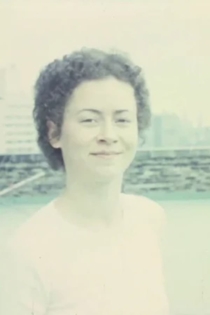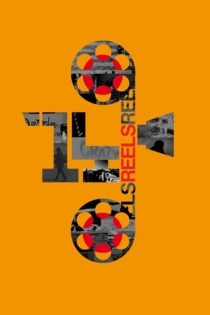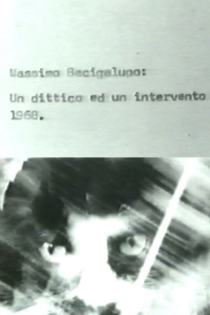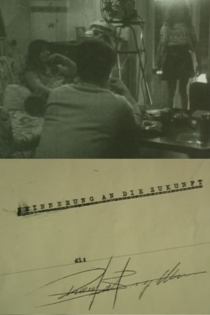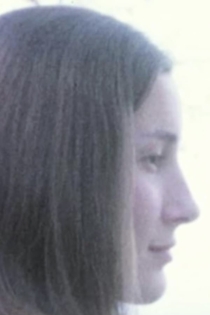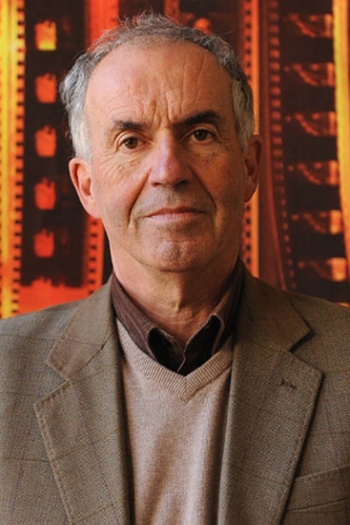
Massimo Bacigalupo
1947 (78 лет)Dei
Tonino De Bernardi
Mariella Navale, Pia Epremian
The construction of the film is very simple. Most of the time we see faces in close-up. Three pairs of faces, usually, on three different levels of superimpositions. At first, the faces are very theatrical, made-up. It's not clear whether they are men or women. They move only slightly. They are, indeed, godlike. As the film progresses, very unnoticeably, these faces begin to gain more life and masculine and feminine qualities. At the end of the film, after three hours, the faces are very real, and very human, and sexes and ages are very clearly defined: men, women, children.
Dei

Warming Up
Massimo Bacigalupo
Robert Best, Walter Bottger
Shot between Italy and New York City, Warming Up is the journal of a season of creativity. The film-maker and his characters improvise scenes and sequences, and wonder how to make up a story as they go along. The recurring theme is how to make the world (or read it as) an imaginative place...
Warming Up

Migrazioni
Massimo Bacigalupo
Shahla Arbabi, Piero Bargellini
This is the third and most extensive part of the cycle Eryngium. The essential theme is the migrations that have populated our world, starting from ancient India and descending into Greece and Western Europe.The film’s conceit is that this movement is still in progress. The characters are shown in transit, as if they were part of an ancient caravan. While they move they make up myths and they worship the Great Goddess,impersonating her story. Thus she appears as young girl and mature woman, and is evoked in the stories and music given on the soundtrack: the Virgin of Bach’s Magnificat, the Sulamite of Stockhausen’s Song of Solomon (“I am black but comely”), tales by Herodotus, Kafka, Villon (as set to music by Ezra Pound). A section is devoted to the idea of celebration, where the migrants get together to worship the life-principle. Later the film moves back to the individual and solitude.
Migration
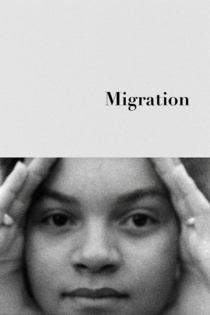
Cartoline dall'America
Massimo Bacigalupo
Marjorie David, Linda Dunn
After the author’s period of experimentation, these American notes are extremely straightforward. As in Migration, however, this America could be a more remote country, and the inspiration is avowedly Japanese (Basho’s Narrow Road to the Deep North). Implicitly, the film-maker compares himself to an old peddler of drawings, Sam, hawking his wares at the entrance of Columbia’s Butler Library.
Postcard from America
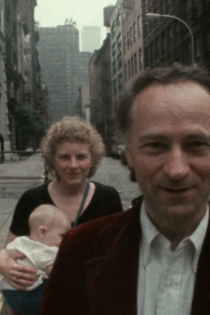
Ariel loquitur
Massimo Bacigalupo
Mara Fazio, Leone Vivante
Material shot between 1961 and 1967 ,including bad takes for Quasi una tangente, is reorganized following the five acts of Shakespeare's The Tempest. Thus Ariel loquitur ("Ariel speaks") has five numbered sections, and a Prospero-like figure of old philosopher appears repeatedly. The wedding ceremony of Miranda and Ferdinand in Act IV of the play is performed in section IV, an unedited night-film in which one catches glimpses of a match being lit. The last section introduces color and sound, the latter through the Beatles' A Day in the Life (from Sgt.Pepper’s Lonely Hearts Club Band).
Ariel loquitur
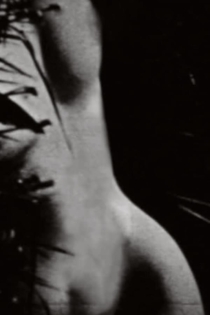
Her
Massimo Bacigalupo
"Her was shot as my contributionto a collective film of the Italian Film-makers' Cooperative, Tutto,tutto nello stesso istante, whichstarted out as a Dadaist protestagainst police brutality. I used a "Newsweek" cutting about the Chicago Convention riots, about a woman being beaten up, and isolated in every line a symbolic word, which returns in the second part with anextension of its original meaning. I remember showing it with an 8mm projector at the USIS Rome Library in winter 1970 as part of a concertof American music." Massimo Bacigalupo
Her

The Last Summer
Massimo Bacigalupo
Elfriede Antze, Massimo Bacigalupo
First chapter of the four-part-cycle Eryngium, the film portrays the family background where the individual journey begins, the rituals of middle-class life, their representations (also in home movies), and what they may conceal.
The Last Summer

